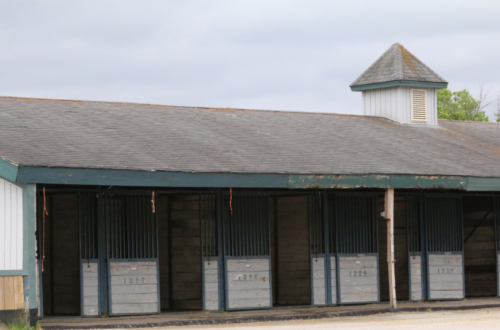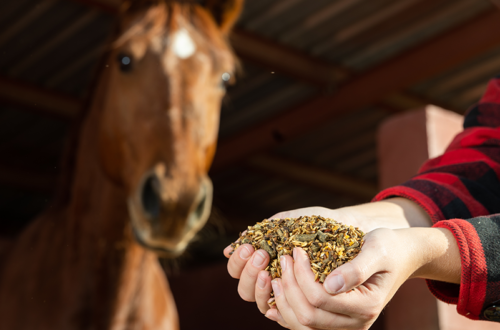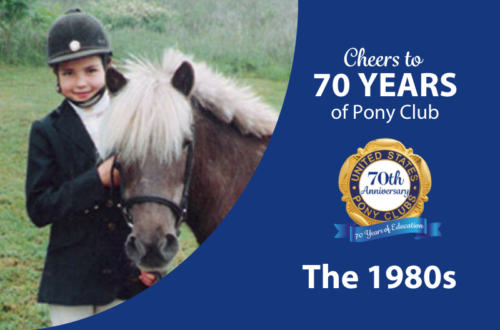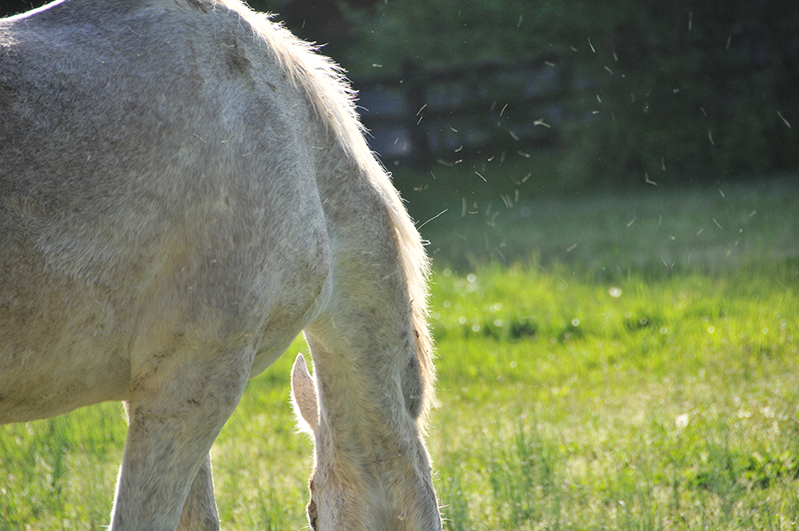
Help Your Horse Shed
By Liv Gude, Brought to you by Shapley’s Grooming Products, the Official Grooming Product Sponsor of USPC
The hair shedding and growing cycle is stimulated by the number of daylight hours. In June and December, the solstices signal a seasonal change. The summer solstice in June is the beginning of decreasing daylight hours. A few weeks later, your horse’s eyes and brain notice this change, and their body starts to change hormones to signal shedding and regrowth of a longer coat for winter.
In December, the winter solstice marks the time of increasing daylight hours. As spring approaches, your horse’s brain activates hormones to shed the winter coat and grow a shorter one. Shedding is a natural process horses go through to prepare for different temperatures.
A horse with a metabolic disorder that interferes with hormones may have trouble shedding correctly and can sometimes grow a much thicker coat, even in the summer. Horses with specific types of eye problems that affect the light detectors in their eyes might also have trouble with growing and shedding hair. Your vet can help your horse if you notice anything unusual.
Let’s bust a few myths here—temperatures do not signal a horse to shed, nor do they influence how long a horse’s coat will be. There are genetics and nutrition at play, but not the weather.
You also can’t change how much your horse grows or sheds hair by using blankets.
Some horses need assistance when shedding. Here are some tips to help your horse shed all of his winter coat and make way for a shiny new one.
Regular Grooming
Regular grooming is one of the most effective ways to help your horse shed. Use a curry comb or grooming gloves to remove loose hair, dirt, and dander from his coat. Shedding blades are okay; be sure to avoid bony areas, legs, faces, and any spots that make your horse react negatively to the shedding blade.
Add some no-rinse shampoo with deodorizer to help lift the hair and dirt as you curry. You can spray your horse directly as if it were a fly spray. Or spray your curry comb or gloves every few minutes. Adding in this no-rinse shampoo will also reduce any static in the air.
Use the longest bristled and stiffest brush your horse enjoys to flick away everything you lift with currying. You could also use no-rinse shampoo in this step to ward off static shocks and lift every last speck of dust.
Using a horse vacuum is also helpful after a long curry comb session.
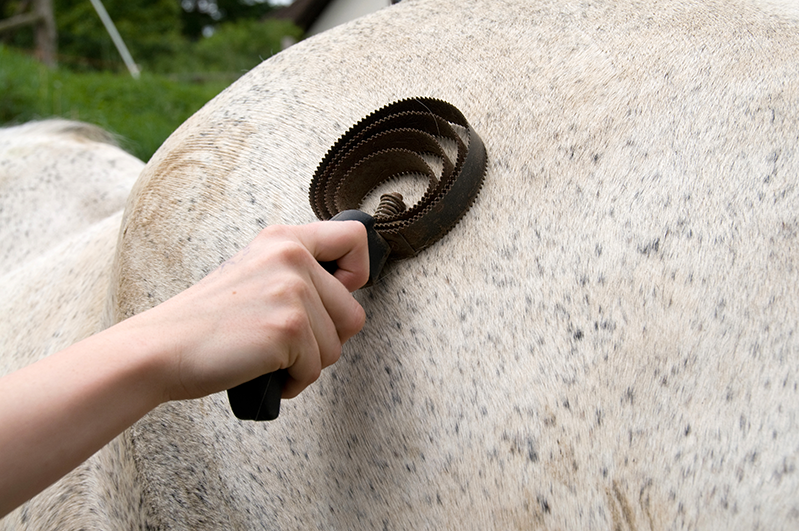
Jesse Franks/Shutterstock
Bathing
When warm weather arrives, bathing your horse can help with shedding, too. The shampoo process is like currying; rinsing removes the shampoo bubbles and loose hair.
Choose the best shampoo for your horse. If your horse needs a shine boost, use a mild shampoo with extra shine ingredients. If your horse has sensitive skin, look for lemongrass and tea tree oil ingredients to soothe the skin. You can leave soothing shampoos on their skin and coat for 5-10 minutes before rinsing.
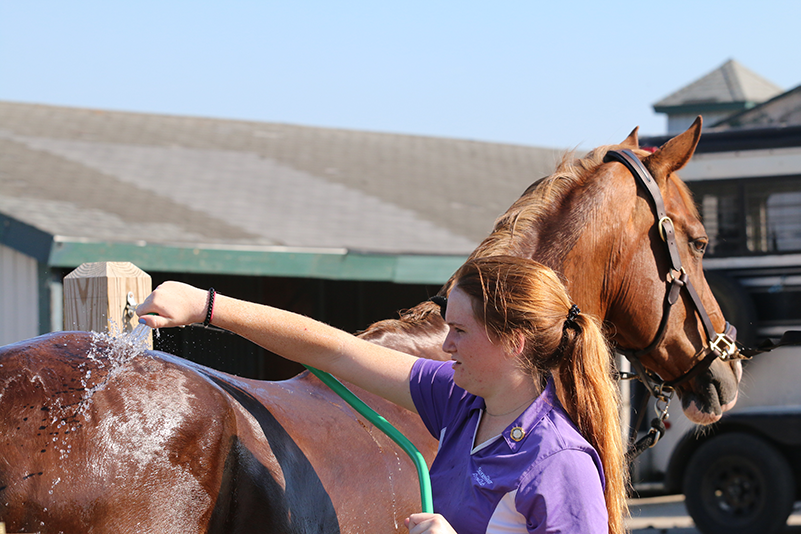
Elizabeth Moyer/United States Pony Clubs
A Balanced Diet
A well-balanced diet is crucial to maintaining a healthy coat. Ensure your horse is getting the necessary vitamins and minerals for healthy skin and hair growth. Working with a veterinarian or equine nutritionist can help your horse have the best possible diet.
Supplements often contain biotin, omega-3 fatty acids, zinc, and other minerals that work to promote a healthy coat. What your horse needs largely depends on his forage, how much pasture he eats, and what sorts of bagged feeds and grains he gets.
Exercise and Turnout
Regular exercise and turnout are not only essential for the overall well-being of your horse but can also aid in shedding. Movement stimulates circulation, which helps the skin stay healthy during the shedding process. Allowing your horse adequate turnout time in a pasture or paddock will also encourage natural rubbing and rolling, which assists in shedding his winter coat. If you can offer your horse a nice sandy place to roll, you may see a horse-shaped patch of hair on the ground.
Blanketing
Adding blankets can help your horse stay comfortable and dry during any time of year. In the spring, the weather can fluctuate wildly. A shedding horse may need a layer if the weather turns cold.
Using blankets to warm your horse up to encourage shedding won’t work. You’ll end up with a sweaty horse and more grooming to do. But, if you bathe on a warm day, using a fleece or wool cooler can help them dry safely and quickly.
Clipping
You can also body clip your horse to help with shedding. This haircut does not replace shedding; it just makes the shedding hair shorter.
When your horse is consistently uncomfortable waiting to shed in warm weather, clipping will make them happier and less likely to sweat too much. There is the risk of clipping away some of the new summer coat, but the hair life cycle is constantly working and growing hair. This transition hair coat will smooth out when your horse finishes shedding.
Oil Buffing
When you have finished grooming for the day, follow up with a quick oil buffing. Mix a few capfuls of grooming oil into a gallon of warm water. Dunk a washcloth or sponge into this mixture, then wring it out well. Your cloth or sponge should be damp. Use this to wipe your horse down. Another option is to place a few drops of grooming oil onto a stiff dandy brush and work that into the coat.
The grooming oil will pick up loose hair, add shine, and condition the coat. You can do this after bathing or clipping, too.
By following these tips, you can assist your horse in the shedding process and ensure he has a comfortable transition to the healthiest coat possible.
This article on Helping Shed Your Horse was originally published in the 2024 Spring issue of Discover USPC magazine. Read more content from that issue.

About Shapley’s — Official USPC Grooming Product Sponsor
Shapley’s has been producing superior equine grooming products for over 85 years, and top riders and horsemen trust Shapley’s for their horse’s health and shine. Learn more at Shapleys.com




